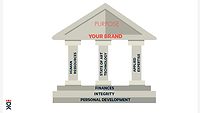Evolving Risk Management Strategies for Restoration Professionals

Photo: Kunakorn Rassadornyindee / iStock via Getty Images Plus
The restoration industry is no stranger to risk. Every day, restoration professionals witness the devastating consequences of disasters that leave homes and businesses in ruins. But what happens when the risk is to your own business? The same forces that create demand for restoration services––like natural disasters––along with other, less visible risks––like supply chain disruptions or regulatory changes—can threaten your ability to operate and serve your clients.
Dustin Carlson, President of SRA 831(b) Admin, is an expert in risk management and alternative insurance solutions. In this Q&A, he shares insights on navigating financial risks, strengthening business continuity, and how tools like 831(b) plans can help restoration companies take control of their future.
Q: First, tell us about your background and why risk management is important.
A: I've spent my career helping businesses navigate risk––first through financial guidance, and now through the use of our plans. One thing I’ve seen time and again is that traditional insurance doesn’t cover everything. As president, my focus is on helping companies prepare for the unexpected—things like supply chain disruptions, regulatory changes, or natural disasters—by leveraging plans as an alternative risk financing tool. My mission is to make business owners aware that traditional insurance isn’t their only option—there are other strategies that can help them manage risk more effectively.
Q: What are the biggest risks facing the restoration industry?
A: As restoration professionals, you unfortunately face a lot of risks that are always shifting and evolving. You may deal with underinsured risks like business interruptions or environmental and pollution liabilities. Long-term service agreements also come with risks, with disputes arising over project scope, cost overruns and liability for damages. On top of that, supply chain disruptions, cyber threats, and third-party software failures can create even bigger headaches. If you don’t address these risks head-on, you’re looking at possible project delays, legal battles, or financial setbacks that traditional insurance may not cover.
Q: How can restoration professionals stay ahead of safety and compliance risks?
A: The key to avoiding both safety and financial risks is being proactive. Prioritize safety, and make sure your team does, too. Invest in safety training, proper equipment, and clear safety procedures. On the financial side, make sure you identify the gaps in your insurance coverage and create a plan to address those.
Q: Why are traditional insurance policies no longer enough?
There are many ways to insure your business, from general liability to workers’ compensation, commercial auto, and professional liability. Each plays a vital role in protecting your company, but standard policies don’t cover every risk.
When you think you’re covered, you may not be. Many businesses learned this the hard way during the COVID-19 pandemic, when business owners had their claims denied due to language in their policies.
You can’t simply purchase a single insurance policy and call it good. Instead, you should audit your risks, and build a comprehensive strategy that will give you the resources you need. Setting aside reserves, implementing risk controls, and leveraging structured options like 831(b) plans can provide better protection and offer flexibility.
Q: How can plans like 831(b) help restoration & remediation business owners?
It allows businesses to self-insure certain risks that may not be fully covered by traditional insurance. Rather than depending on outside insurers, business owners set aside funds to manage specific liabilities directly.
For restoration and remediation companies, this plan helps address risks like losses due to environmental liabilities, disputes, and insurance deductibles. It also offers flexibility to fund warranty liabilities.
It’s an additional safety net that addresses risks that go uninsured or underinsured by traditional carriers. It’s an effective strategy for managing unpredictable risks while improving long-term financial health.
Q: What steps can be taken to mitigate project risks and operational disruptions?
I've seen plenty of situations where things could have gone more smoothly if the right steps had been taken upfront. Delayed client payments, disputes over insurance claims, unexpected project hiccups—they all come up more often than most people realize. But there are steps you can take to mitigate these risks and keep things running smoothly.
I’m a big fan of over communicating. It removes a lot of unknowns and ensures everyone is on the same page as much as possible. We’ve also seen great success when clients have a contingency plan in place for many of their most significant risks.
Q: What is the future of risk management for the restoration industry?
Risks are likely to grow more complex, not less so. Just as you have to adapt restoration and remediation practices when new tools pop up, you’ve got to adapt your risk management strategies.
Alternative options allow businesses to self-insure with tax-deferred funds and create a reserve for unforeseen events. By embracing proactive risk management practices, companies will be better equipped to navigate these growing challenges and capitalize on emerging opportunities.
Looking for a reprint of this article?
From high-res PDFs to custom plaques, order your copy today!









